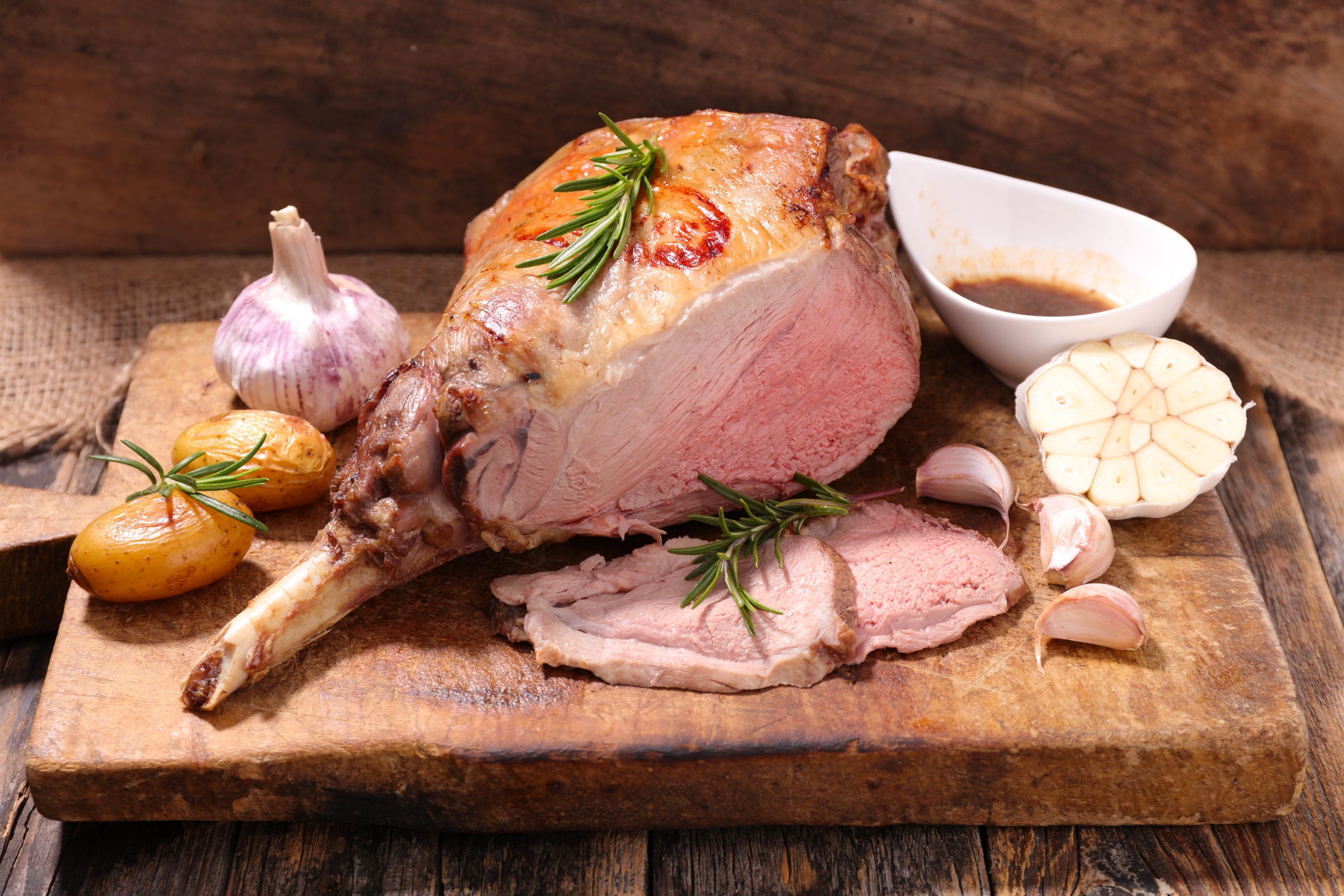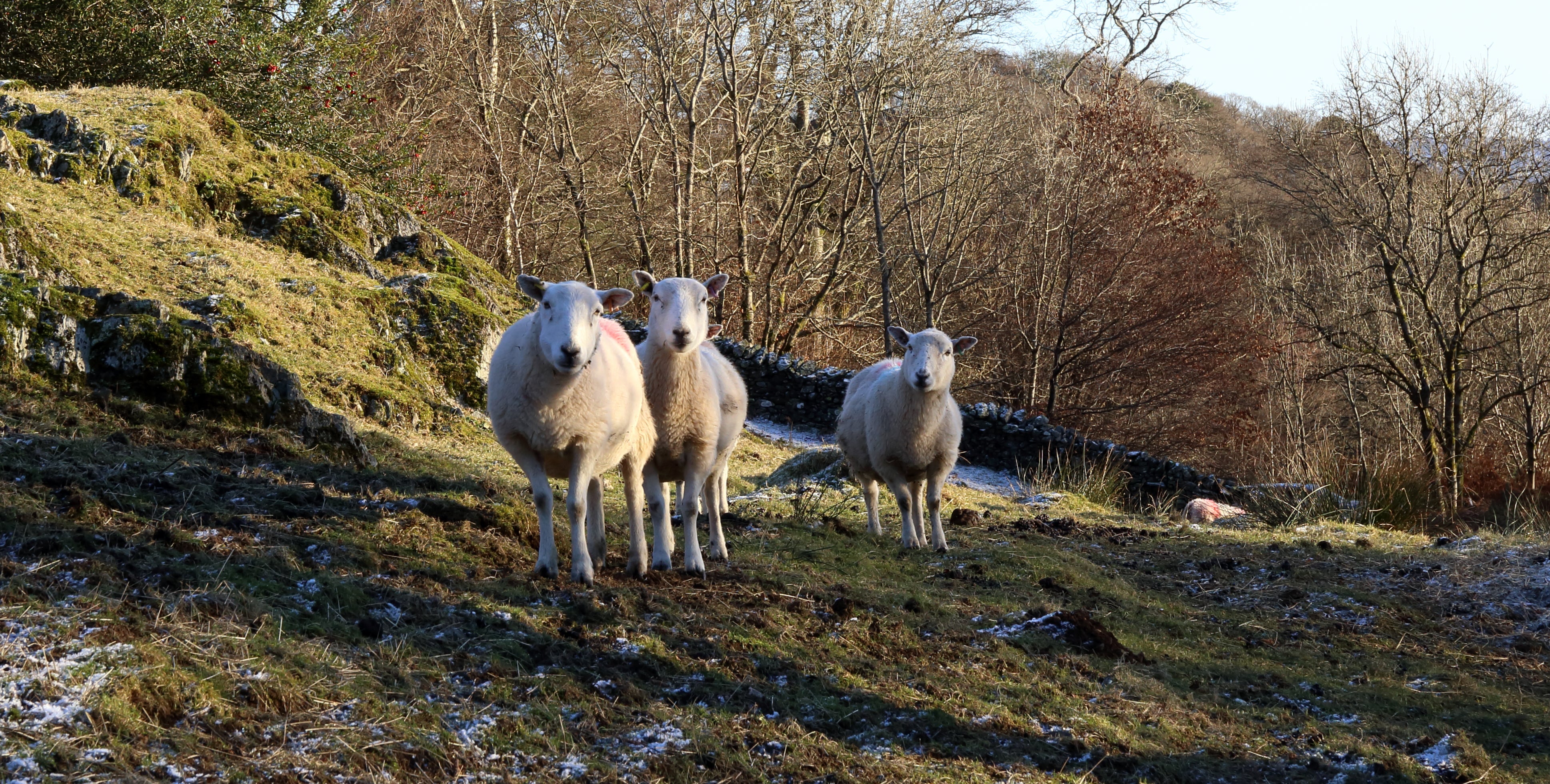Why it’s time to ditch lamb and try this at Easter instead
Think you’re eating spring lamb this Easter? Think again. Rushed, imported and out of season, it’s a product of habit, not heritage – and even the war in Ukraine has played a part. Hannah Twiggs uncovers the flavourful, forgotten meat that farmers say we should be eating instead


Spring lamb has become a culinary cliche: soft, sweet and symbolically tied to Easter. But the meat that turns up on most British tables this weekend is rarely what it claims to be. The lambs born in spring are still wobbling through wet fields. The ones being eaten? Born in winter, fattened fast on grain or flown in from the other side of the world. It’s called “new season lamb,” but it’s out of sync with the actual season – and often, with flavour too.
The truth is, you’ve probably never eaten true spring lamb at Easter. What’s typically sold as “new season lamb” is often nothing of the sort. Lambs born in January or even December are rushed through on grain and silage to meet seasonal demand, despite poor weather, limited grass and high stress for both animal and farmer.
The result is meat that is undeniably tender – but often lacking in flavour and commanding a price that’s more tradition than taste.
“Easter… a celebration… courting birds, warmer rays, harder ground. And then we go and spoil it all by eating spring lamb,” says Herefordshire farmer Tom Jones, who supplies native meat to leading restaurants and recently launched a campaign to bring hogget into the Easter spotlight (supported by chefs Ravneet Gill, Ben Lippett and Hannah Mai, among others). “Tender, but tasteless.”
And so, a culinary sleight of hand: the real seasonal meat, bursting with the flavour of last summer’s pasture, is not lamb at all, but hogget – a sheep aged between one and two years old. It’s the meat we used to eat before supermarkets got squeamish, and the meat a growing number of farmers, butchers and chefs are now urging us to rediscover.
The forgotten middle
In the age-old story of sheep meat, hogget has always been the missing chapter. Not as young and delicate as lamb, not as mature and musky as mutton, hogget offers something more complex: the richness of flavour, the layering of fat, the patience of time.
“With hogget, you are eating the summer meat of last year. All of that wealth and fortitude. Layers of taste,” says Jones, “The hogget has completed the set of seasons.”
Historically, hogget and mutton were Britain’s staples. It wasn’t until the rise of supermarket culture in the post-war period that mild, sweet, young lamb became the norm. In fact, most references to “lamb” in 19th- and early-20th-century cookbooks are what we’d now call hogget. But as flavour was traded for tenderness, and seasonal cycles replaced by year-round supply, hogget quietly slipped from public consciousness.
And yet, not for everyone. “We rear hoggets because we find that it’s the perfect balance between the tenderness of lamb and the depth of flavour that you get with mutton,” says Jake Townley of The Bull’s Head pub in the Black Mountains. “The marker of a good hogget for us is a wonderful marbling of intramuscular fat – far from something to be avoided, this fat is full of the wonderful flavour molecules that make this meat so special.”

Townley is among a growing number of chefs and producers putting hogget back on the menu. It appears in biryanis and mutton rolls at Kolamba, dry curries at Kolae, chops at Manteca, slow roasts at The Camberwell Arms and as a Sunday centrepiece at pubs and dining rooms across the country.
And crucially, it’s also being sought out by home cooks.
“We’ve definitely noticed a steady rise in interest around hogget, not just at Easter but throughout the year,” says a spokesperson for HG Walter Butchers in London. “Both chefs and home cooks are beginning to appreciate the depth of flavour that comes with a slightly older animal.”
Townley has noticed it too. “To be honest, we get a lot of guests who think that it is pork!” he says. “However, it is a great starting point to begin a conversation. We do get a lot of feedback from older generations who tell us that this is how they remember sheep meat used to taste.”
War, weather and the resurrection of seasonality
The rise of hogget isn’t just a story about flavour. It’s also about farming economics and the way global events have rippled through British fields.
When Russia invaded Ukraine in 2022, it triggered a massive disruption in global grain exports and feed costs soared. With spring lamb, which often requires supplementary grain and silage to finish during the lean early months of the year, this created a perfect storm: higher costs, tighter margins and a growing sense that the system wasn’t working.
“Feed costs have soared in the last couple of years, largely due to global grain supply issues,” says HG Walter. “With spring lamb, you’re often looking at finishing an animal in three to four months, at a time of year when there’s little grass available. That often means a greater reliance on supplementary feed alongside silage, which increases costs. Hogget, on the other hand, has had a longer life, predominantly on pasture, so in part, avoids these additional costs.”
Even as Ukrainian grain exports have recovered through new shipping corridors and supplies have returned to near pre-war levels, the memory of those disruptions has left an impression on many farmers. Combined with mounting pressure to reduce carbon footprints, protect soil health and rear animals more naturally, hogget has re-emerged as the pragmatic choice.
It is, quite simply, a more sustainable meat.
“Because hogget will have spent more on grass, it can be less reliant on bought-in feed – which can help from a sustainability and cost perspective,” says HG Walter. “However, that’s not to say lamb is inherently less sustainable. With the right farming practices in place – good land management and proper welfare – both lamb and hogget can be reared in a way that works in harmony with nature.”
That sense of working in harmony is echoed by Jones, who sees farming as a kind of ecological choreography. He puts the returns from selling his meat back into the countryside. “The animals provide an environment for the birds and the bees, the trees provide nutritional value to the land that reflects in the meat of the animals,” he says. “The animals that are free-range and content lead to the meat eaters’ satisfaction.”
It’s a chain of care that begins in the field and ends on your fork – and one that might just make your Easter roast taste better in every possible sense.
Hogget: better for you, better for the planet
For anyone thinking about nutrition as much as flavour, hogget may also be the smarter choice.

Because they graze longer on diverse pastures, hogget, like other grass-fed animals, are typically rich in iron, zinc, B vitamins and high-quality protein. Their meat may also contain higher levels of conjugated linoleic acid (CLA) – a fatty acid found in pasture-raised animals that some studies have linked to immune and heart health benefits.
“We recently gained our pasture for life certification, meaning that our animals are 100 per cent pasture-fed and are not fed on any grain,” says Townley. “This, along with the native breeds we select and our location in the wet and windy borderlands of England and Wales, means that our animals take longer to finish naturally than an animal farmed in a more intensive fashion would.”
This return to pasture and flavour, and away from rushed rearing systems, reflects a wider food movement. As consumers move toward regenerative agriculture, lower-input livestock and a deeper interest in traceability, hogget ticks all the right boxes. It is, increasingly, the meat of both memory and future.
A taste of the past, an ethics of the future
But beyond the economics and the health credentials is the question of ethics. Of seasonality. Of allowing animals to grow as they should.
“The poor spring lamb, barely a quarter of a year old, has nothing in its scrapbook but concentrated grain and struggling grass,” says Jones. “Yet the lambs born last year, who watched me stumble through the winter from their fields of turnips, swedes and grass (seemingly dowdily named ‘old season lamb’) are the ones to dine on at Easter. A major flavour extravaganza.”
The poor spring lamb, barely a quarter of a year old, has nothing in its scrapbook but concentrated grain and struggling grass. Yet the lambs born last year ... are the ones to dine on at Easter
Hogget represents a return to traditional grazing, native breeds and a slower, more circular way of farming. “I couldn’t understand the intensive way of farming. So much material waste and no direct contact with the consumer,” Jones says, which is why he delivers directly to restaurants like St John and The Camberwell Arms, and opened a Bermondsey butcher’s shop for his meat, supplying establishments such as Lyle’s, The Clove Club, Camille and more. “Intensive farming is only about the money, not the taste or the satisfaction,” he says. “When you spend so much time with the animals and their environment, you want to know where it is going and how people feel about it.”
This deep connection to land and animal shows in the meat.
At The Bull’s Head, Townley says hogget is an incredibly versatile product in the kitchen. “We often braise the shoulders in lashings of wine and garden herbs until it falls off the bone,” he says, “or perhaps grill the chops over fire after a good marinade.” Recently, they’ve taken to baking the legs on a bed of hay from the very same pasture the sheep have grazed, which, he says, leaves a sweet, floral note.
And HG Walter urges first-timers not to be shy: “If you’ve never tried hogget, you’re missing out on some of the best flavour. For anyone who enjoys lamb but wants something a little more developed, hogget is a fantastic option.”
The roast we deserve
It’s easy to understand the pull of Easter lamb. The symbolism is strong, the habit ingrained. But if the past few years have taught us anything – through pandemic, war, and the rising cost of everything – it’s that habits are worth re-examining.
Easter is a celebration of rebirth and renewal, so why not extend that to what we eat? Hogget isn’t just a more flavourful and sustainable alternative – it’s a reminder that good food takes time. A sheep that has lived a full year on grass and weather is a far cry from a fast-tracked lamb fattened in a shed.
This year, rather than reaching for imported or out-of-sync spring lamb, consider choosing a roast that’s actually in season, better for the land, and richer on the plate. Hogget is the roast we deserve – and the one that might just change what Easter tastes like for good.





Join our commenting forum
Join thought-provoking conversations, follow other Independent readers and see their replies
Comments